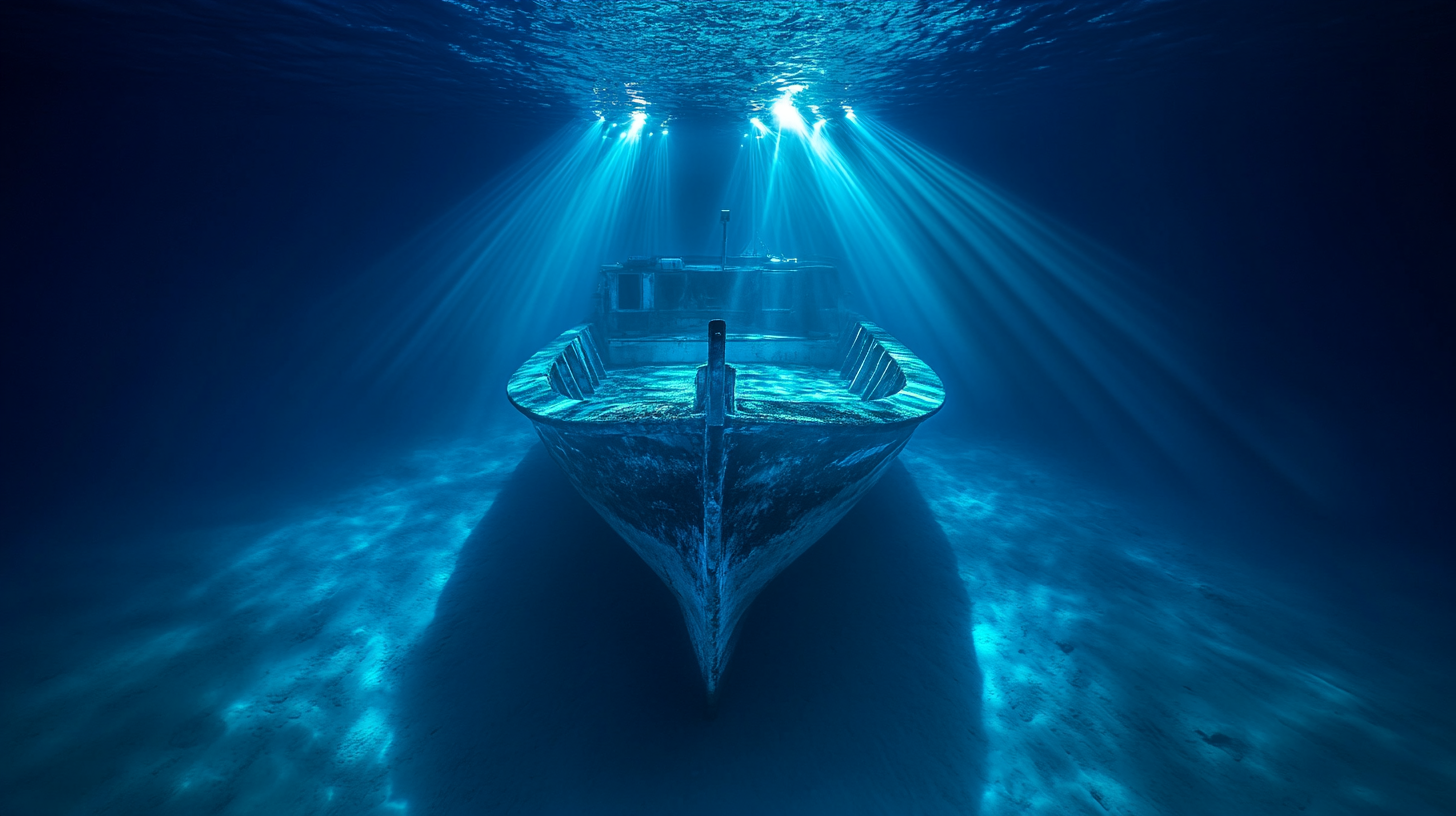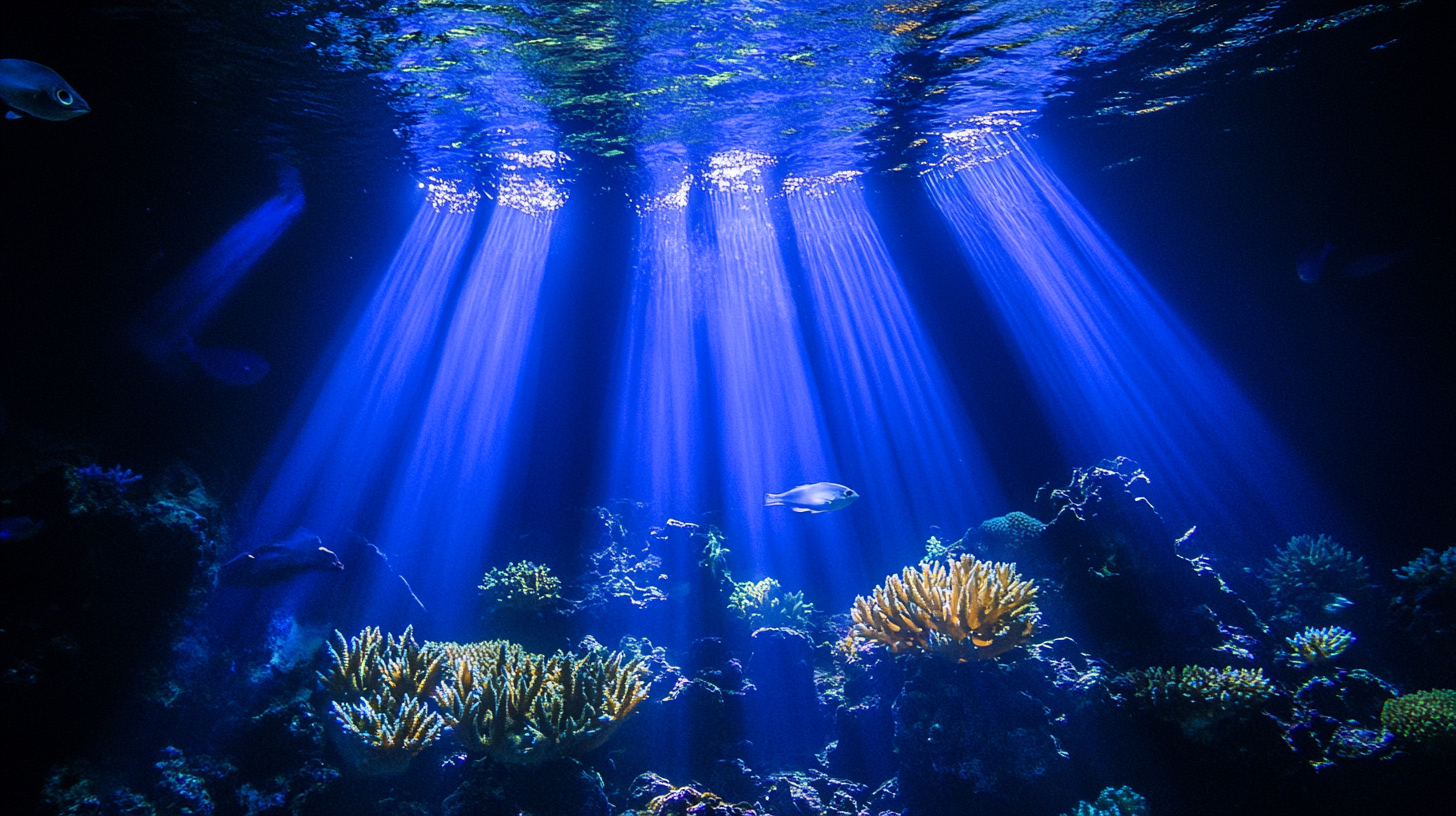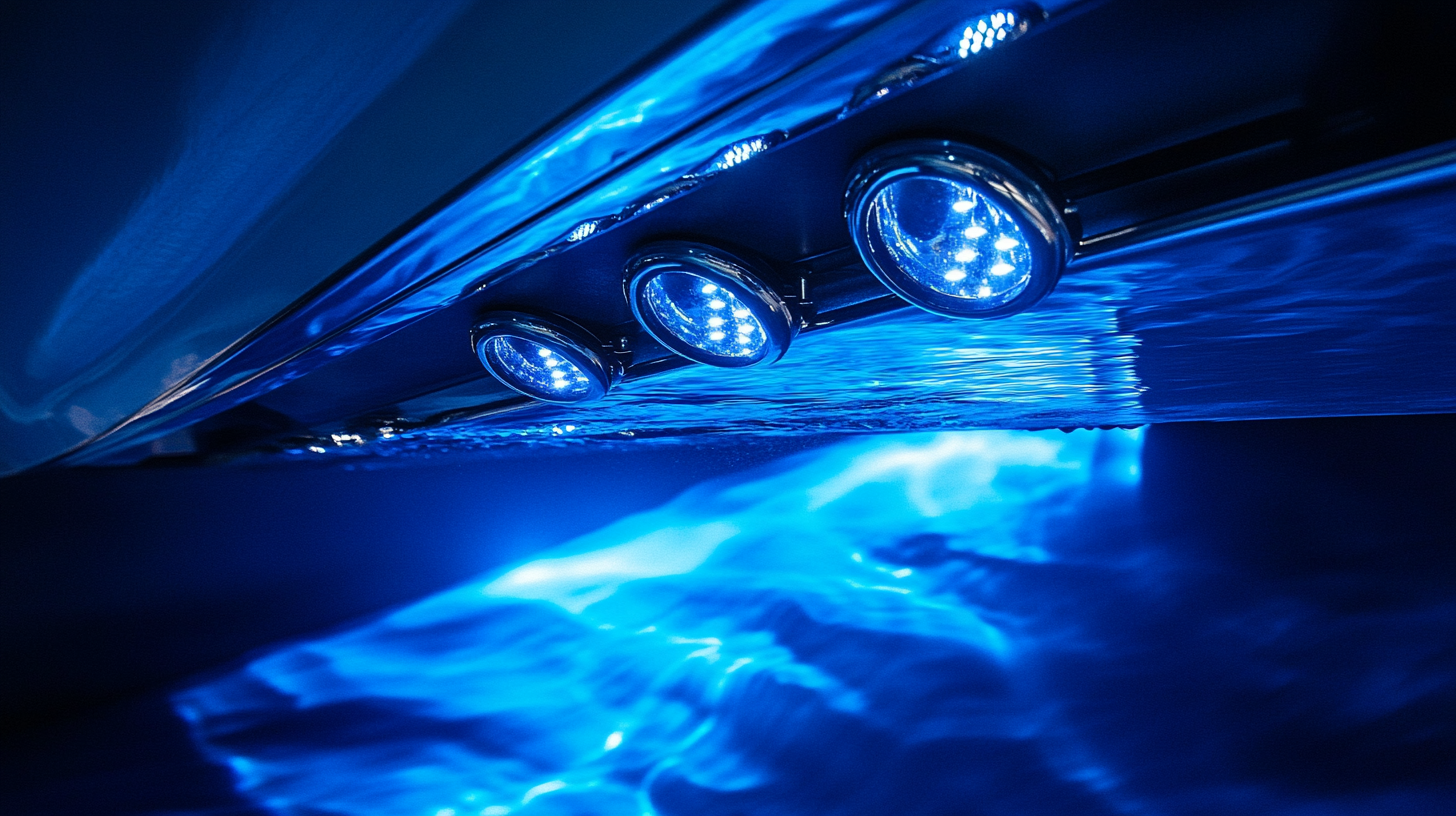How to choose flexible and durable underwater boat lights
When it comes to underwater lighting, it’s essential to understand how water impacts light quality and performance. Light behaves differently underwater compared to above ground, as water absorbs and scatters light, reducing visibility. This phenomenon becomes more pronounced the deeper you go. For this reason, it’s important to choose lights that are both durable and designed especially for these environments.
The first thing to consider is how much light is actually needed for your intended purpose. If you’re using underwater boat lights purely for aesthetic reasons, such as creating a beautiful glow around your hull, softer lighting may suffice. However, if you need strong illumination for safety or to attract marine life, higher brightness is essential. Be cautious—overly intense lights can sometimes cause glare in murky water, making it harder to see rather than easier.
Another key factor in underwater lighting is beam angle. A narrow beam will focus light in a small, concentrated area which is ideal for spotlighting specific zones. On the other hand, a wider beam covers a broader area but may not penetrate as deeply. When choosing tips for your setup, it’s a good idea to balance the beam angle depending on whether you’re looking to light up the bottom of shallow water or illuminate a broader surrounding area.
Key materials for durability in water
When selecting underwater boat lights, the materials used in their construction play a crucial role in ensuring they can withstand the harsh conditions they will face. Water, especially saltwater, can be extremely harsh on gear, constantly wearing down surfaces and compromising both the performance and longevity of your equipment. That’s why it’s important to opt for materials that are known for their superior durability in aquatic environments. For underwater lighting, corrosion resistance should always be a top priority.
One of the most well-suited materials for durable underwater lights is marine-grade stainless steel, particularly 316 stainless steel. This premium-grade steel is known for its excellent resistance to both rust and corrosion in saltwater environments, making it ideal for lights that will be submerged or splashed regularly. Additionally, stainless steel fixtures handle pressure well, which means they can withstand the underwater depths without warping or losing their integrity over time.
Another strong contender for underwater light housings is high-grade powder-coated aluminum. Not only is aluminum naturally lightweight and resistant to corrosion, but powder-coating adds an additional protective layer that helps defend against the abrasive factors of aquatic use. While slightly less resilient than stainless steel, aluminum lights are often more affordable and offer excellent performance when used in the right conditions, particularly in freshwater or brackish water environments. Keep in mind that with any metallic material, the quality of sealing around connections is just as important to prevent water from seeping into critical components.
For even greater flexibility and toughness, some manufacturers turn to polycarbonate or thermoplastic housings. Though not metallic, these materials offer excellent durability under prolonged exposure to both fresh and saltwater. Polycarbonate is especially valued for its impact resistance, meaning lights made of this material can take occasional knocks and bumps without cracking or breaking. It’s also non-corrosive and UV-resistant, making it a great option for those who need lights that can stand up to sunlight and water, whether submerged or not. As a bonus, polycarbonate fixtures are often lighter, making them easier to install on a boat without adding unnecessary weight.
Of course, longevity isn’t just about the housing material—pay attention to the seals and gaskets in your light setup. Rubber or silicone seals are highly recommended for their ability to prevent leaks and maintain a watertight barrier around electrical components. You will often find that top-quality underwater lights come with double- or triple-sealed O-rings, further ensuring no water infiltration. Choosing lights with proper waterproof ratings, such as IP68 (the highest protection rating for dust and water), means you won’t have to worry about water compromising the electronics inside your lights.
By focusing on highly durable materials, you’ll be setting yourself up for a worry-free experience when it comes to your underwater lighting. Whether you’re after those sleek stainless steel fixtures or lightweight polycarbonate options, the right choice will ensure your setup can handle the rugged marine environment while keeping your boat stylishly illuminated.
Evaluating flexibility and installation options
When you’re considering underwater boat lights, flexibility in installation can be just as crucial as durability. The most flexible lights are those that offer multiple mounting options, enabling you to place the lights exactly where they will be most effective on your vessel. Some installations call for permanent mounting, while others require lights that can be easily repositioned. To strike that perfect balance between functionality and flexibility, think about how and where the lights will be mounted depending on your needs—whether it’s on the transom, hull, or even underwater brackets.
Surface-mounted lights are one of the easiest options for installation. These are affixed directly to the outer part of the boat, and they don’t require much cutting or drilling, which is a major advantage if you’re looking for a simpler setup. Many surface-mounted lights are also easily adjustable, allowing you to tweak the beam angle post-installation. This type of flexibility can be especially useful if you decide to change the purpose of the light—from providing general illumination to spotlighting specific areas around your boat, like your wake or even dockside fish.
If you’re after a more streamlined look, flush-mounted lights may be the way to go. These lights sit almost flush with the surface of the boat, providing a sleek appearance with minimal protrusion. While the installation is a bit more involved since it requires cutting holes in your boat’s hull or transom, the result is a more integrated appearance, and you won’t have to worry about your lights snagging or getting caught on anything. The subtlety of flush-mounted lights makes them great for installations where aesthetics are as important as functionality, but you’ll want to ensure that the lights you choose are also sufficiently durable and corrosion-resistant, especially if they’re in constant contact with water.
Beyond the mounting options, another way to approach flexibility is with portable or removable lighting systems. These lights are a great option if your lighting needs change from one trip to the next, or if you don’t want to leave lights permanently installed. Temporary lighting allows for greater mobility, enabling you to shift between on-deck lighting when moored and submersible lights when you’re underway. Some even come with suction cups, magnetic mounts, or clamps, making installation a breeze with no tools required. They’re also great if you plan to remove the lights in off-seasons or when performing maintenance on your boat.
The cable and wiring management can also affect the ease of installation and flexibility in your lighting system. The best options typically come with long, durable, and waterproof cables, allowing you to position your lights far enough from the power source to maintain functionality without worrying about water intrusion. Look for high-quality, marine-grade wiring to ensure both flexibility and durability when running wires through tight or submerged spaces.
Ease of installation doesn’t stop at the physical mounting. Consider whether the lighting system you’re evaluating includes user-friendly control options such as wireless remotes or Bluetooth integration. Having flexible control over your lighting setup lets you adjust the brightness or even the color while staying completely hands-off—ideal for late nights out on the water when you want to control the ambiance without returning to port. Some high-end systems even allow multiple lighting zones to be managed individually, creating a truly customized lighting experience for your watercraft.
Choosing the right color and brightness for visibility
Selecting the right color and brightness for your underwater lights is essential for both functionality and aesthetic appeal. Color plays a significant role in how well you can see under the water, as well as how visible your boat is to others. When considering which color to opt for, you must think about the water depth, water clarity, and the purpose of the lights.
Clear water transmits colors differently than murky or dark water. In general, white lights produce the broadest visibility and are most versatile, as they illuminate objects clearly and provide natural brightness underwater. White is often the go-to color for tasks requiring visibility, like docking or setting anchor at night. On the downside, white light can sometimes attract unwanted attention from marine life, drawing sea creatures toward your boat.
Blue is another popular option for underwater boat lighting. It penetrates the water deeper than most other colors, making it an excellent choice for creating a visible glow even at greater depths. Blue light is naturally calming and doesn’t cause as much glare as white, which makes it ideal for nighttime aesthetics. This color is often used for a sleek, sophisticated look around the vessel, giving off a modern and futuristic appearance at night. Additionally, blue light is known to attract fish, making it a top choice for anglers.
For those who are frequently boating in shallow or murky waters, green may provide the best visibility. Green light has strong properties for cutting through particles suspended in water, making it more effective in environments with poor clarity. Aside from its practical advantages, green lighting is also commonly used to attract fish. In fact, it’s possible to use green lights specifically as part of your fishing strategy, as it stimulates plankton movement, which in turn draws fish closer to your boat.
When picking light brightness—measured in lumens—select an intensity that matches your visibility needs without being overly bright. In many cases, something between 800 and 1,500 lumens will suffice for casual nighttime cruising or accent lighting, while output ranging from 2,000 to 6,000 lumens delivers stronger illumination for navigating or seeing underwater objects clearly. However, keep in mind that choosing brightness should take into account not just the initial glow, but also the long-term usability; a higher lumen count may wear out certain bulbs quicker. Furthermore, extremely bright lights in clear water can reflect back and cause glare, which reduces visibility—particularly in shallow bays or along busy docks. To avoid this, aim for lower-wattage bulbs if you’re operating in shallow areas regularly.
Many modern underwater LED lights come with variable brightness settings, further enhancing their flexibility. Such adjustable lights allow boaters to decrease or increase brightness levels based on conditions. This feature is especially useful if your water activities change from one excursion to the next, ensuring that your lights suit both low-light marine environments and open, clear waterways.
Another key consideration is color temperature, typically measured in degrees Kelvin (K). The color temperature affects how the light looks visually, ranging from warm (yellowish) to cool (blueish) hues. Lights closer to 5,000K appear more closely aligned with daylight, offering crisper, natural brightness. Meanwhile, warmer-colored lights closer to 3,000K can give off a more inviting glow, ideal for setting an intimate or relaxed atmosphere on board.
When choosing lights, you should make sure they complement your boat’s overall style and functionality. Ultimately, the right combination of color and brightness will help you achieve the desired effect—whether that’s to enhance nighttime fishing, improve underwater visibility, or simply create an eye-catching aesthetic when moored. With flexible, modern LED options, adjusting the colors and intensities to suit different water conditions or personal preferences has never been easier.
Energy efficiency and maintenance considerations
When it comes to energy efficiency, modern underwater lighting technology has made significant strides, particularly with the introduction of LED lights. LED lights are by far the most energy-efficient choice when compared to traditional halogen or incandescent bulbs. They consume significantly less power, which translates into less strain on your boat’s electrical system and longer battery life. In fact, LEDs typically use up to 80% less energy than traditional lighting options. This means you can run them for extended periods without having to worry about draining your boat’s power supply—a crucial factor, especially during long nights on the water.
One of the deciding factors in choosing tips for energy-efficient underwater lights has to do with “lumens per watt,” an important measure of how well a light can convert power into visible light. LEDs generally outperform other types of lighting sources in this ratio, providing more brightness for less wattage. Therefore, you’ll be getting the most out of your energy with minimal electrical input. For anyone conscious about reducing their overall energy usage, LED lights are the clear and durable winner. However, it’s essential to ensure that the lights you invest in feature a low power draw without sacrificing on brightness—balancing functionality and efficiency is key to getting the right setup for your boat.
But energy efficiency goes hand in hand with ease of maintenance. LED lights not only consume less energy but also have a longer lifespan—typically lasting for 30,000 to 50,000 hours of operation. In comparison, halogen bulbs can only last between 1,000 to 5,000 hours depending on use. With LED bulbs, you’ll have to replace them a lot less frequently, which can save you both time and money in the long term. Additionally, because LEDs generate less heat than other lighting options, they are less likely to overheat and cause damage to surrounding components, reducing the need for frequent maintenance or repairs.
As you evaluate the durability of your lighting system, think about choosing fixtures that are sealed tight against water and contaminants, as this will dramatically lower the chances of malfunction and failure. High-quality underwater boat lights typically come with IP (Ingress Protection) ratings that should be taken seriously. An IP68 rating, for example, provides the highest level of protection against water ingress, ensuring that your lights remain functional even when they’re submerged for extended periods. This is key when selecting durable, waterproof lights that require little in terms of repairs or part replacements.
Another factor that greatly impacts maintenance needs is the material used for the lights themselves. In addition to ensuring the lights are made from corrosion-resistant materials like stainless steel or polycarbonate, you’ll want to verify that the lights’ housings and seals are built to withstand not only water exposure but also UV rays. Exposure to sunlight can cause lower-quality plastics to warp or degrade, necessitating frequent replacements. Opting for marine-grade materials with UV resistance ensures your underwater lights stay durable and reliable over time, reducing the need for ongoing maintenance.
Lastly, make sure that the setup you’re choosing is compatible with your boat’s existing electrical system. Lower wattage LED systems are less likely to overheat or short-circuit, but it’s still worthwhile to ensure that the lights are installed correctly to avoid any electrical issues down the line. It’s always a good idea to go with reputable brands that offer warranties and customer support; these can help mitigate maintenance hassles if anything goes wrong. Moreover, keeping an eye on your power supply and wiring during regular boat inspections can go a long way in preventing problems before they even start.


